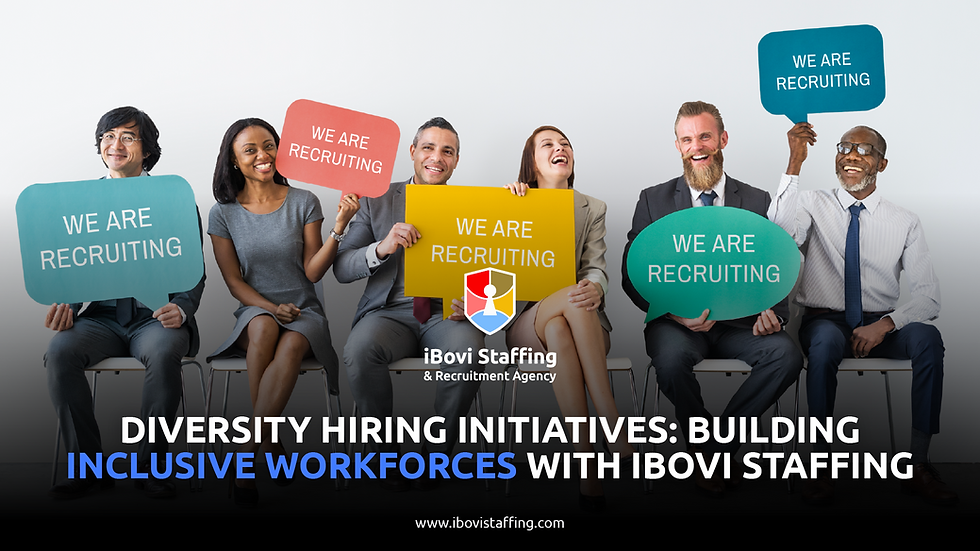Top 3 Upcoming Trends in Healthcare to Watch out for in 2023
- Anupama Sinha
.jpg/v1/fill/w_320,h_320/file.jpg)
- Aug 30, 2023
- 3 min read
Updated: Nov 2, 2024
Table of Contents:
Introduction to Trends in Healthcare
Telemedicine: Bridging Gaps in Healthcare
AI's Transformational Role in Healthcare
Robotic Innovations in the Medical Field
Wearable Technology Enhancing Patient Care
Patient Engagement Strategies for Improved Experience
Addressing Staffing Requirements and Employee Retention
Conclusion
Introduction to Trends in Healthcare
The world is evolving in healthcare, medical treatment and patient care in 2023. As we walk into the new era, three healthcare trends watch over us on this year:
Telemedicine,
Artificial Intelligence (AI), and
Remote Monitoring Devices.
In this blog, we'll also explore related subtopics such as:
Patient engagement strategies,
The transformative power of AI,
Robotics in healthcare,
Wearable technology's impact, and
Addressing staffing requirements and employee retention.
So, let’s dive in!
Telemedicine: Bridging Gaps in Healthcare
Telemedicine has emerged as a game-changer in the trends in healthcare, especially in the wake of the COVID-19 pandemic. It enables patients to connect with healthcare professionals remotely, breaking down geographical barriers along with ensuring timely access to medical advice.
The convenience and cost-effectiveness that comes with telemedicine are undeniable, making it an essential trend to watch for. Secure communication channels and user-friendly platforms will play an important role in enhancing patient experience and acceptance.
AI's Transformational Role in Healthcare
Artificial Intelligence is revolutionizing healthcare by:
Accelerating diagnostics,
Treatment plans,
Drug discovery.
AI-powered algorithms analyze vast amounts of medical data to identify patterns and predict outcomes, aiding doctors in making more informed decisions.
This algorithm is being used to develop personalized treatment plans, optimizing patient care. However, it's important to maintain a firm balance between the AI assistance and the human touch that defines extraordinary healthcare.
Robotic Innovations in the Medical Field
Robots are entering various aspects of healthcare, from surgery to nursing. Surgical robots offer better accuracy with little invasive procedures, reducing patient recovery times.
Robotic exoskeletons are helping in physical therapy, enabling patients in mobility and strength.
As these technologies are improving, there needs to be a proper plan to how to utilize it effectively and safely.
Wearable Technology Enhancing Patient Care
Wearable devices are no longer limited to just fitness tracking; they're taking vital steps in healthcare monitoring. From smartwatches to wearable patches, these technologies provide real-time data to healthcare providers.
It allows for early detection, particularly in chronic disease areas. However, the concerns about data privacy and accuracy will be essential to gain trust in patients and healthcare professionals.
Patient Engagement Strategies for Improved Experience
Enhancing patient engagement improves quality healthcare. Strategies like:
Interactive mobile apps,
Patient portals, and
Educational content
empower patients to take charge of their health. Improving communication between patients and healthcare professionals will lead to better treatment and outcomes.
Addressing Staffing Requirements and Employee Retention
As the healthcare industry evolves, so does the demand of medical professionals in the trends of healthcare. Addressing staffing shortages and retaining talent are challenges that healthcare industry undergoes.
Higher job satisfaction and longer tenure can be achieved by:
Offering professional development opportunities,
Flexible work arrangements, and
Prioritizing employee well-being to
Also, leveraging technology to handle administrative tasks can also lighten the burden on healthcare staffs.
Want to know more about Staffing? Tap here!
Conclusion
The healthcare industry is on the edge of transformative changes in 2023, driven by trends like Telemedicine, AI, and Remote Monitoring Devices.
These innovations hold the promises of:
Improved patient care,
Enhanced diagnostics, and
More efficient healthcare systems.
However, successful usage requires a stiff balanced approach that preserves the human element of care while considering the power of technology.
By prioritizing patient engagement, investing in AI-driven solutions, embracing robotics and wearables, and addressing staffing challenges, the healthcare sector can move forward to create a brighter and healthier future for all.
FAQs:
1. What is telemedicine, and how does it benefit patients?
Telemedicine involves using digital communication tools to provide medical care remotely. Patients can consult with healthcare professionals through video calls, phone calls, or messaging, eliminating the need for in-person visits.
2. How does AI contribute to transforming healthcare?
Artificial Intelligence is revolutionizing healthcare by analyzing vast amounts of medical data to
identify patterns,
predict outcomes, and
assist in decision-making.
3. How does iBovi Staffing transform healthcare?
iBovi staffing stands firm like a support system offering you the best of the healthcare talent at your fingertips. We understand good health is the utmost priority of mankind and work towards bridging the gap of inadequate to sufficient.
Thanks for reading. We hope that you found this blog insightful. If you did, do not forget to share it with your friends and colleagues and subscribe to our email list for more such content!








Comments